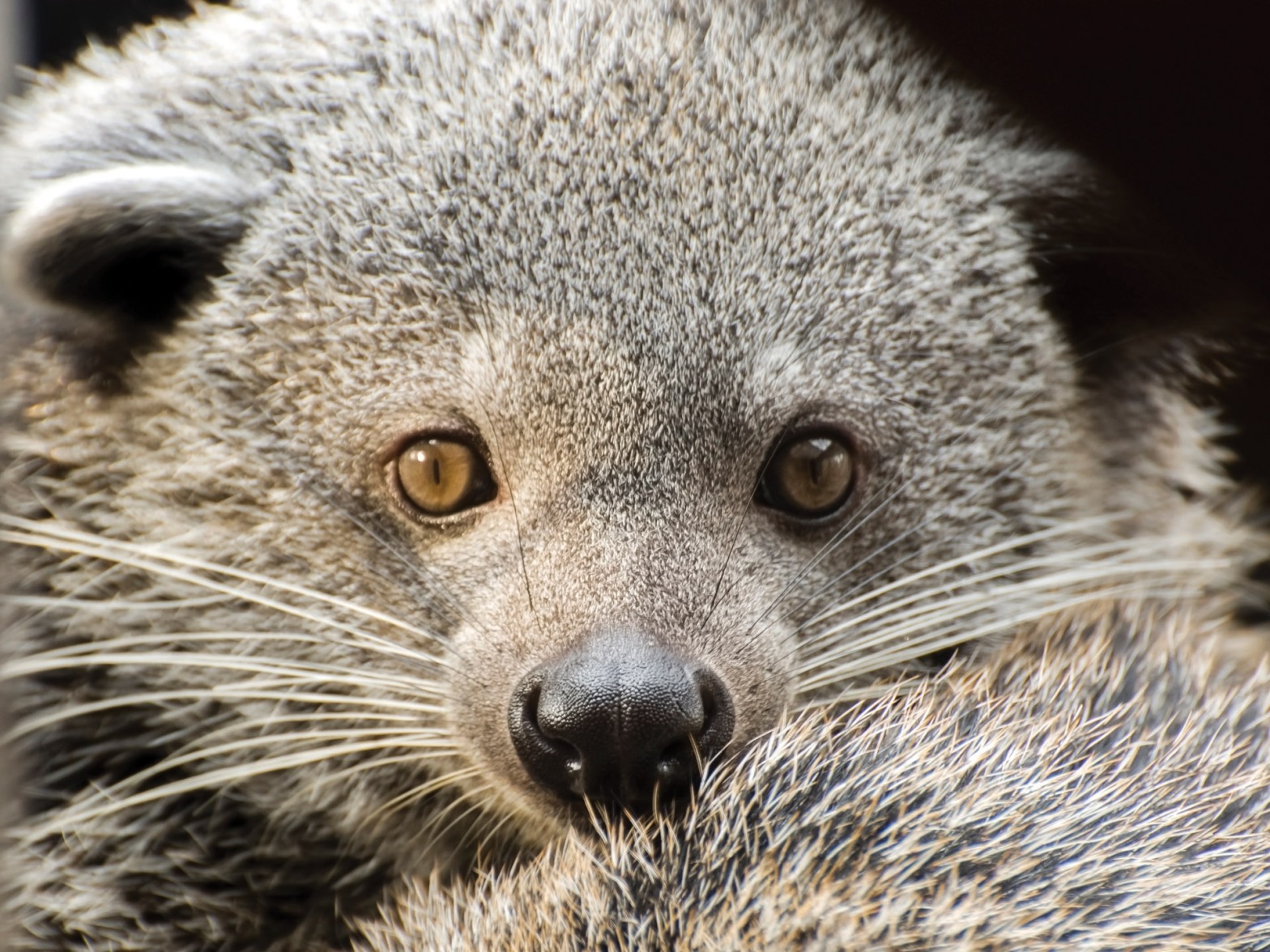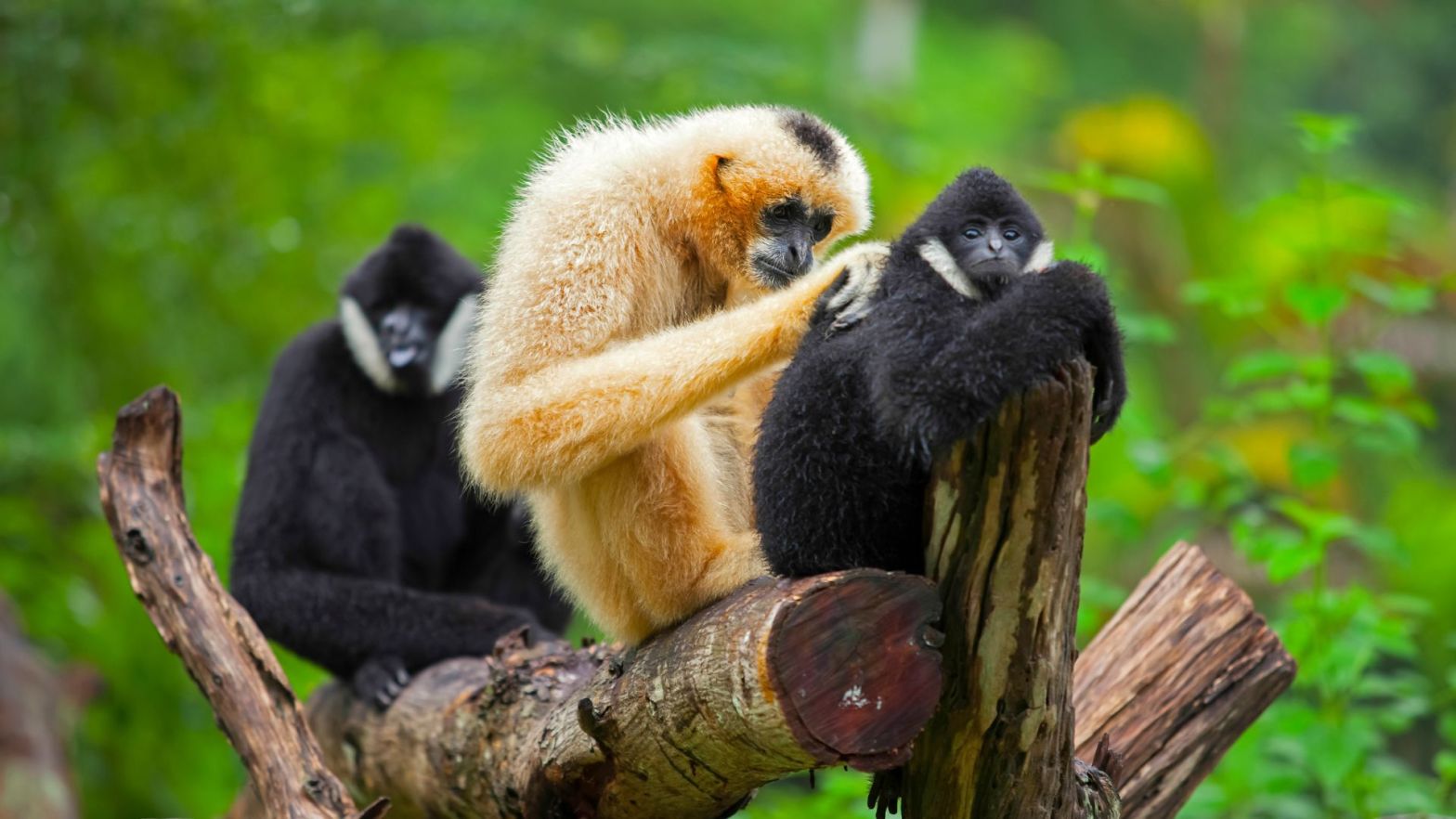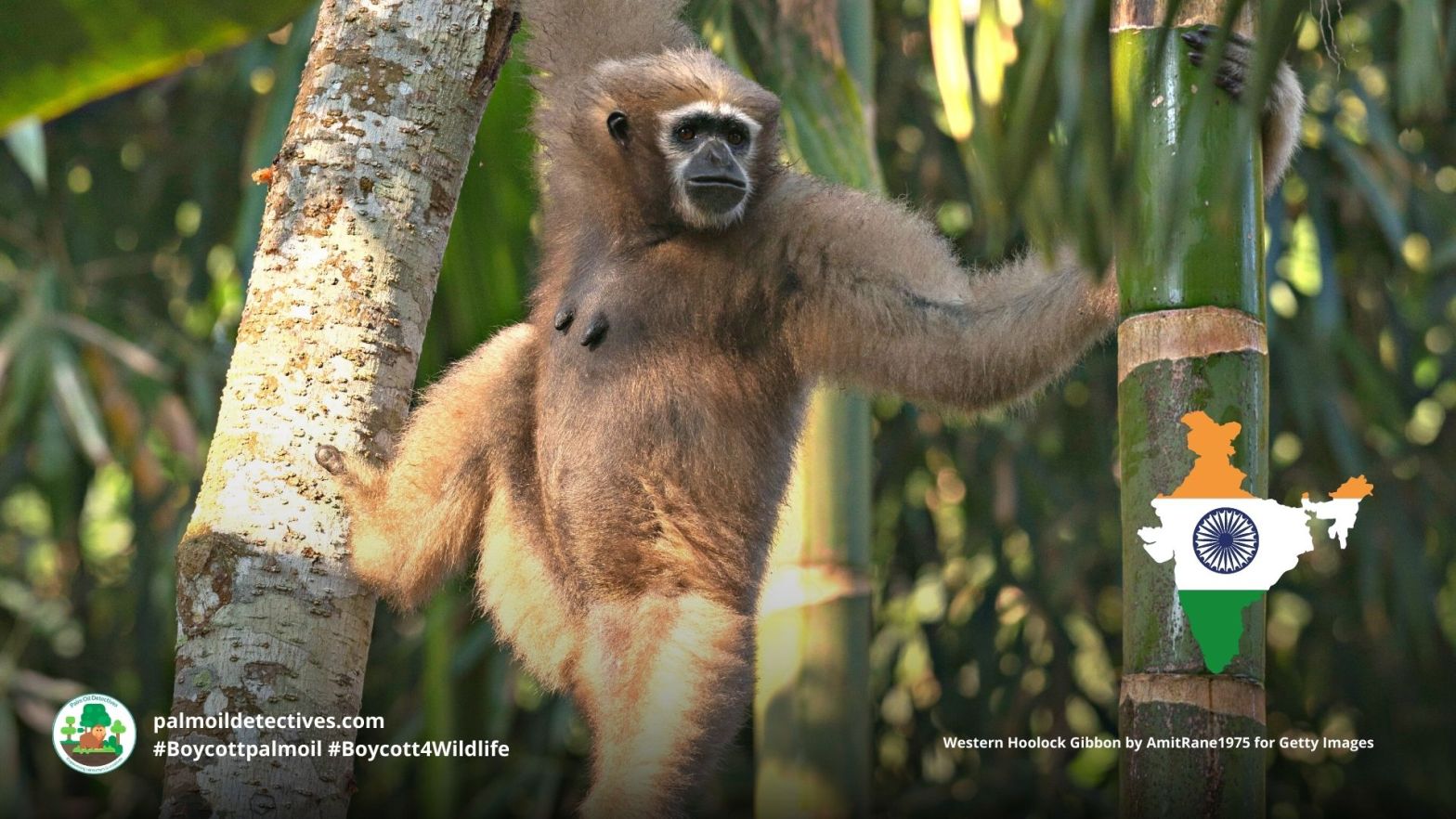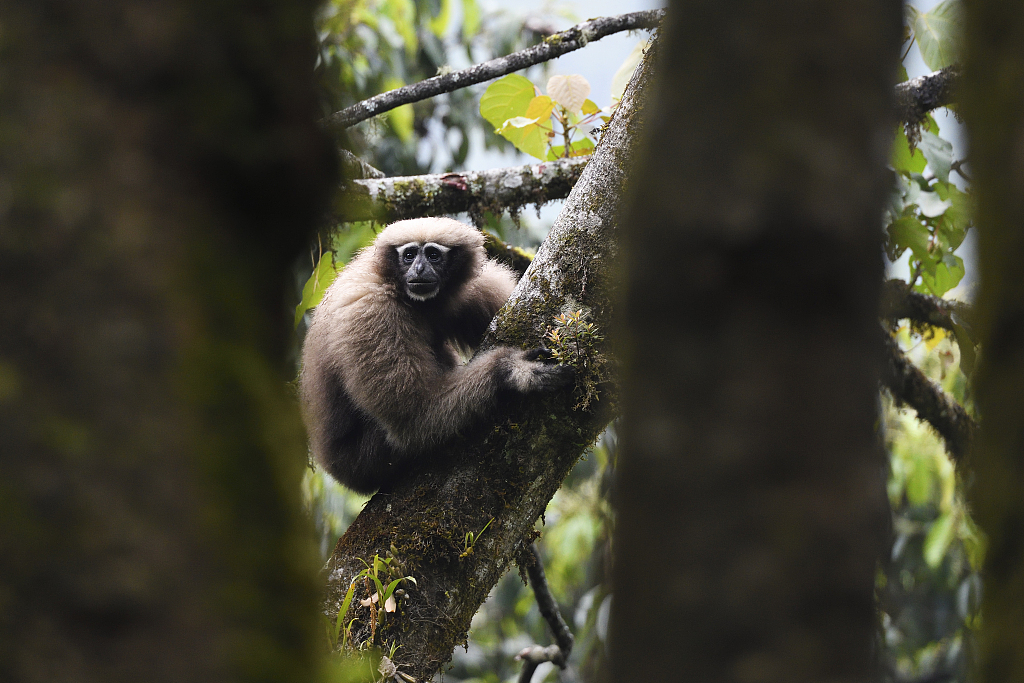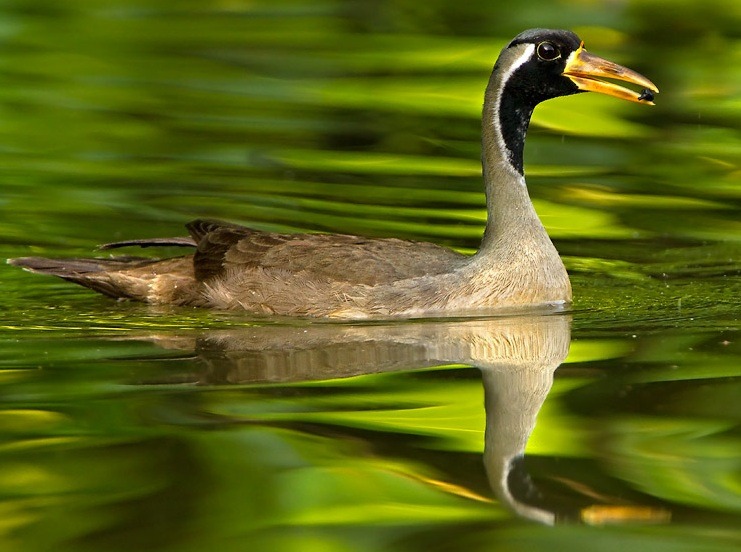The Nicobar pigeon is the largest pigeon in the world and the closest living relative to the extinct dodo bird. They are famous for their gorgeous iridescent feathers. When threatened they make a pig-like grunt and are known for the strange way that they drink – by dunking their heads into water and sucking it up instead of sipping as other birds do. They are Near Threatened from palm oil deforestation on the Nicobar and Andaman Islands in #India along with hunting and the pet trade. Help their survival and #Boycottpalmoil #Boycott4Wildlife in the supermarket.
Tag Archives: Myanmar
Banded Surili (Raffles Banded Langur) Presbytis femoralis
A curious and intelligent small monkey species, Raffles’ Banded Langurs are also known by their other common names: Banded Leaf Monkey or Banded Surili. They are endemic to the southern peninsula of Malaysia and Singapore. They are now listed as critically endangered on the IUCN Red List with their primary threat being palm oil deforestation across their range.
Deforestation and conversion of habitat continue to be the major threats to this species. They particularly affected by oil palm plantations, which are expanding very rapidly within their range. Protect them each time you shop by boycotting meat and palm oil in the supermarket.
Dhole Canis Cuon alpinus
Fiercely protective, elusive and beautiful Dholes are an ancient species of wild dog that diverged from other dog species millions of years ago. Dholes are also known as Asiatic Wild Dogs, Indian Wild Dogs, Red Wolves and Mountain Wolves. Once found across the Russian Steppe, China, the Middle East and northern Asia their range has been fractured and reduced dramatically by human-related pressures and threats. They are now Endangered on IUCN Red List.
The Dhole have a striking and intense appearance with thick and dense fur ranging from pale gold, to yellow to dark reddish-brown and grey-brown. Their underside is typically a paler colour of creamy white. They differ from other dog species in that they have a thicker muzzle, one fewer molar on each side of their jaws and additional teats. They are average sized dogs and typically weigh between 10 – 25kg with males being about 4.5kg heavier than females.
Fishing Cat Prionailurus viverrinus
Although they look cute and cuddly, the Fishing Cat Prionailurus viverrinus has a feisty, firecracker temper. This small to medium sized wild cat can become defensive if approached in the wild. They are around twice the size of a domestic cat and typically weigh around 5-16 kg and have stocky short legs and a short tail.
Their faces are round with their noses elongated, giving them a civet-like appearance, which is why their scientific name is viverrine. They are agile and fast hunters and can reach fast speeds in pursuit of prey. They have an average lifespan of approximately 12 years. Help them every time you shop and #Boycottpalmoil #Boycott4Wildlife
Helmeted Hornbill Rhinoplax vigil
Helmeted Hornbills are spectacular, large and intelligent birds native to SE Asia, known for their substantial helmet-like structure on their head called a casque made of ivory. This hefty head accounts for 11% of their 3kg body weight. They are found on the Malay Peninsula: Sumatra, Borneo, Myanmar and Thailand. They are critically endangered. Their main threats are illegal hunting and wildlife trade for their ivory casques along with palm oil and timber deforestation. Help them each time you shop and #Boycottpalmoil #Boycott4Wildlife
Binturong Arctictis binturong
Binturong Arctictis binturong Bangladesh; Bhutan; Cambodia; China; India; Indonesia (Kalimantan, Jawa, Sumatera); Lao People’s Democratic Republic; Malaysia (Sarawak, Sabah, Peninsular Malaysia); Myanmar; Nepal; Philippines; Thailand; Vietnam Presence Uncertain: Brunei Darussalam Vulnerable Habitat loss has been the predominant driver of decline of the Binturong’s southern (Sundaic) portion of the range, where a significant proportion of lowlandContinue reading “Binturong Arctictis binturong”
Dusky Langur Trachypithecus obscurus
Playful, gregarious and social Dusky Langurs prefer to live in closed primary forests, but they can also be found in old-growth secondary and disturbed forests, plantations, urban areas, and parks, suggesting that they are adaptable compared to other colobine species. They are mostly tree dwelling and active during the day. They face many threats including hunting and deforestation for palm oil and other agriculture. Help them every time you shop and #Boycottpalmoil #Boycott4Wildlife
Eastern Hoolock Gibbon Hoolock leuconedys
Eastern Hoolock Gibbon Hoolock leuconedys Vulnerable Extant (resident): Myanmar Presence Uncertain: India The Hoolock Gibbons are three species located in South Central Asia. They are the second largest of the gibbons after the Siamang. They have rings around their eyes and mouths giving them a mask-like appearance. Like other gibbon species they call to eachContinue reading “Eastern Hoolock Gibbon Hoolock leuconedys”
Western Hoolock Gibbon Hoolock hoolock
Energetic and social Western Hoolock Gibbons live in India, Bangladesh and Myanmar. Known for their close-knit families and melodious singing, they are endangered from palm oil deforestation, timber deforestation, human persecution and illegal poaching. Help them every time you shop by boycotting palm oil in the supermarket. #Boycottpalmoil #Boycott4Wildlife
Skywalker Hoolock Gibbon Hoolock tianxing
Skywalker Hoolock Gibbon Hoolock tianxing Endangered China, Myanmar The Hoolock Gibbons are three species located in South Central Asia. They are the second largest of the gibbons after the Siamang. They have rings around their eyes and mouths giving them a mask-like appearance. Like other gibbon species they call to each other in regionalised accents,Continue reading “Skywalker Hoolock Gibbon Hoolock tianxing”
Masked Finfoot Heliopais personatus
Masked Finfoot Heliopais personatus Endangered Borneo, Malaysia, Thailand, Laos, Vietnam, Cambodia, Myanmar, Indonesia, Bangladesh, India, Singapore The Masked Finfoot lives principally in rivers in lowland riverine forest including mangroves, but has been recorded in coastal and inland wetlands, such as tidal creeks, flooded forest, swamps and lakes (rarely reservoirs or industrial pools on passage). OneContinue reading “Masked Finfoot Heliopais personatus”
Southeast Asian Box Turtle Cuora amboinensis
Southeast Asian Box Turtle Cuora amboinensis Endangered Bangladesh; Brunei; India; Indonesia; Laos; Malaysia; Myanmar; Philippines; Singapore; Thailand; Vietnam The Southeast Asian Box Turtle is largely restricted to standing water bodies, but opportunistically inhabits most types of water bodies except large rivers and reservoirs. They prefer lowland swampy areas with dense vegetation, but also occurs in intermittentContinue reading “Southeast Asian Box Turtle Cuora amboinensis”
Malayan Tapir Tapirus indicus
Malayan Tapir Tapirus indicus Endangered Indonesia (Sumatera); Malaysia; Myanmar; Thailand Population declines are estimated to have been greater than 50% in the past three generations (36 years) driven primarily by large scale conversion of tapir habitat to palm oil plantations and other human dominated land-use. The main reason for declines in the past is habitatContinue reading “Malayan Tapir Tapirus indicus”
Popa langur Trachypithecus popa
Popa Langur Trachypithecus popa Critically Endangered A new primate species has been found in Myanmar, the Popa Langur Trachypithecus popa, was identified in the lab, using samples of tissues from museum specimens, captive species, and fecal samples from wild animals collected in the forests of Myanmar. Only around 200 to 260 Popa Langur individuals areContinue reading “Popa langur Trachypithecus popa”
Asian Giant Tortoise Manouria emys
Asian Giant Tortoise Manouria emys Critically Endangered Extant (resident): Bangladesh; India; Indonesia; Malaysia; Myanmar; Thailand Extinct: Singapore The Asian Giant Tortoise exclusively inhabits evergreen forest, from lowland regions up to altitudes of about 1,000 m (typically 600-1,500 m). The animals appreciate moisture and are typically found near water and frequently burrow in damp soil (NutphandContinue reading “Asian Giant Tortoise Manouria emys”
Straw-headed Bulbul Pycnonotus zeylanicus
The Straw-headed Bulbul occupies successional habitats bordering rivers, streams, marshes and other wet areas, where seasonal flooding prevents the establishment of climax communities. These include secondary and disturbed primary evergreen forest, plantations, gardens and cultivation fringe, scrub and, locally, reedbeds and mangroves. This species is declining extremely rapidly across their range as a result of trapping of wild birds for the cage-bird trade, compounded by habitat loss within their rather specific habitat type. Therefore, the species is evaluated as Critically Endangered.






